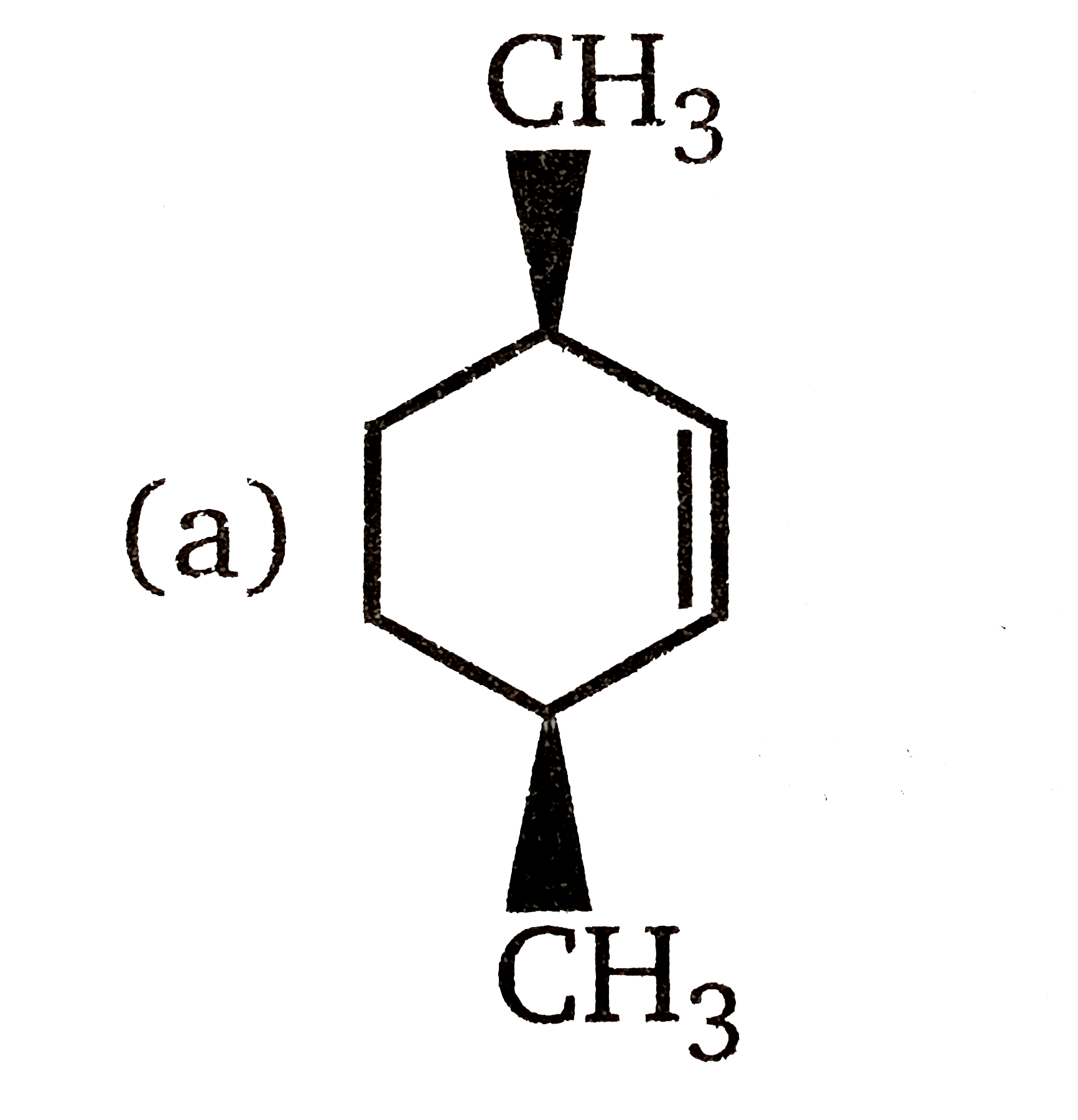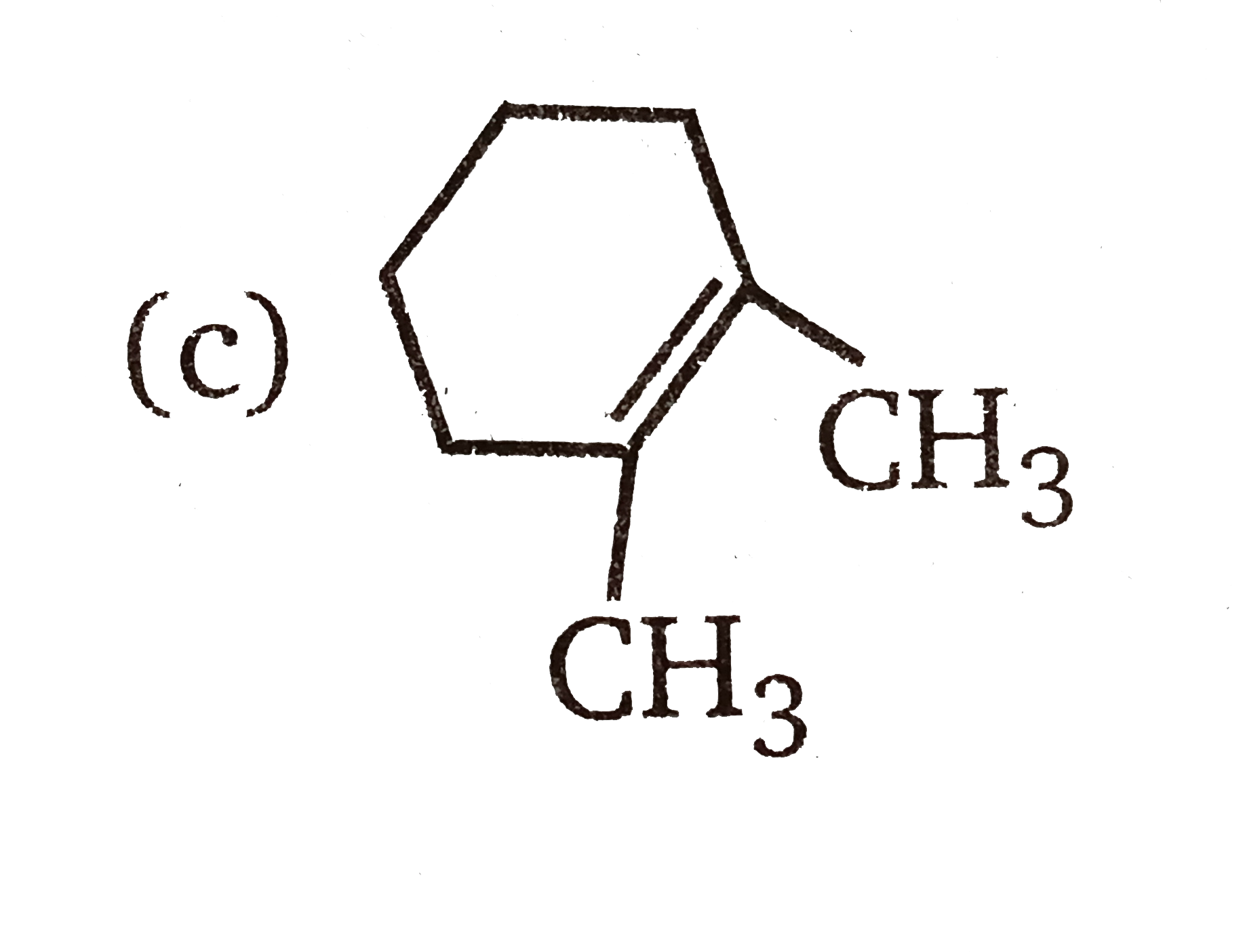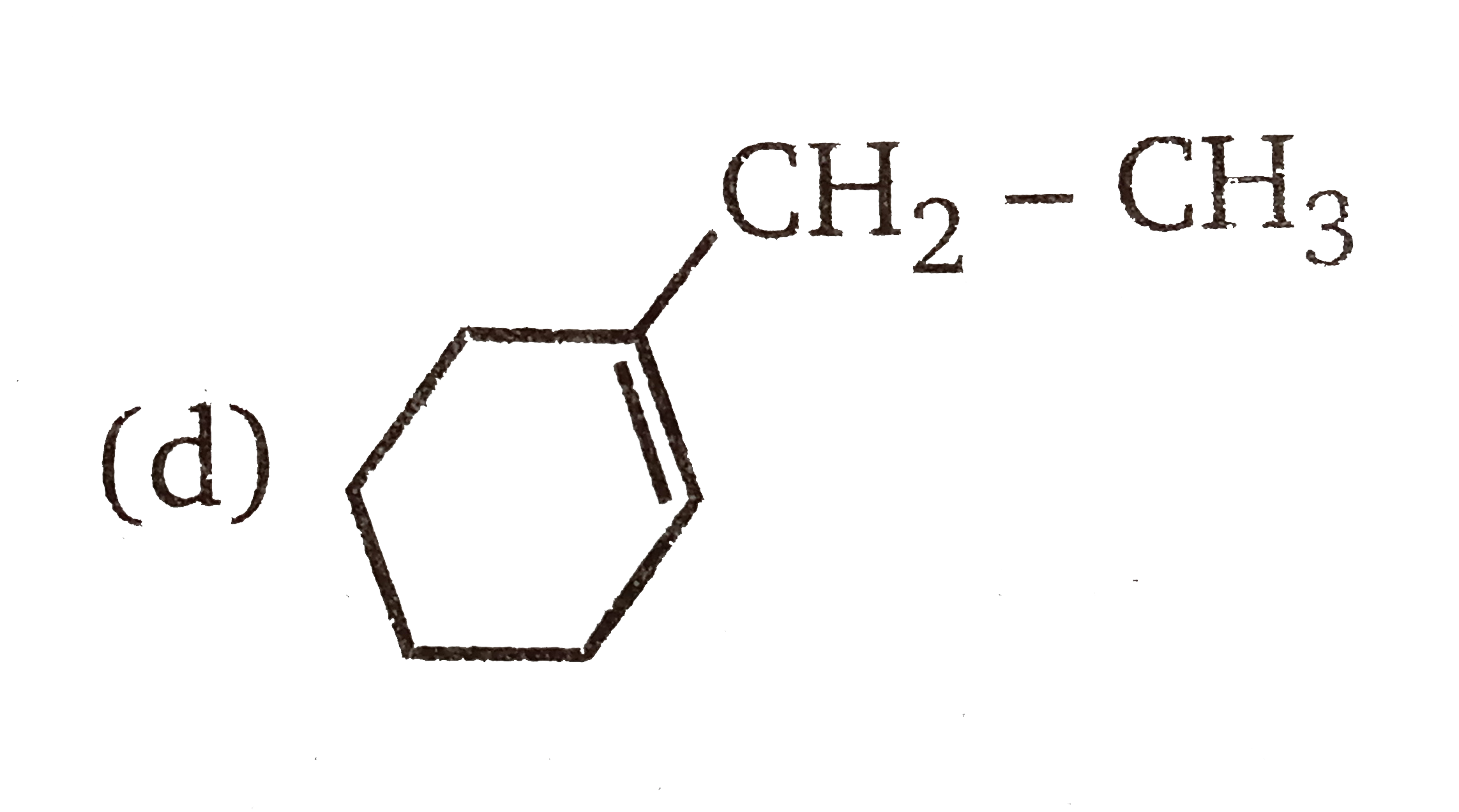An optically active alcohol A (C6H10O) absorbs 2 mol of hydrogen per mole of A upon catalytic hydrogenation and gives a product B. The compound B is resistant to oxidation by CrO3 and does not show any optical activity Deduce the structures of A and B.
C6H10O(optically active )compound A+2H2Catalyst−−−−→C6H14Ocompound B(optically inactive)CrO3−−→No reaction
Compound A is unsaturated monohydric alcohol and it has either two C=C bonds or one triple bond .
Compound A is optically active and after hydrogenation optically inactive compound .B. is obtained which is not oxidised with CrO3. Hence, in it-OH group is attached with tertiary C -atom ie, it is a tertiary alcohol.
Thus, the possible structure of A is gives as below:
OH∣∗ CH3−C−C≡CH∣ CH2−CH3 Here, .∗C is an asymmetric C-atom and shows optical activity.
OH∣∗ CH3−C−C≡CH+2H2∣compound A(optical active)Catalyst−−−−→OH∣∗ CH3−C−CH2−CH3∣compound B(optical inactive)
Similar Questions
Knowledge Check
An optically active alkene (X) has the molecular fromula C6H12. The actalytic hydrogen ation of (X) gives an achiral product. The structure of (X) would be :
ACH3−C∣CH3H−CH=CH−CH3BCH3−C∣CH3H−CH2=CH−CH2CCH3−C∣C2H5H−CH=CH2DCH3−C∣C2H5H−C=CHAn optically active compound A with molecular formula C8H14 undergoes catalytic hydrogenation togive meso compound, the structure of (A) is:
A B
B C
C D
D
An optical active alcohol of formula C4H10O on oxidation given which of the following compound?
A(CH3)2CHCHOB(CH3)2C=CH2CCH3COC2H5DCH3CH2CH2CHO
Give the structure of an optically active alkene (A) having the lowest molecular mass, which on catalytic hydrogenation gives an optically inactive compound (B).
View SolutionThere are six isomeric alkenes (A, B, C, D, E, and F) that require 1 mol of H2 per mole of alkene for hydrogenation and give the same product (G) on hydrogenation. G is an alkane having the lowest molecular mass and is optically active. Write the structure of compounds from A to G.
View SolutionAn optically active hydrocarbon X has molecular formula C6H12. X on catalytic hydrogenation gives optically inactive C6H14.X could be
View SolutionAn optically active alkene with the molecular fomula C6CH12 which upon hydrogenation gives optically inactive alkane is
View SolutionAn optically active compound A with molecular formula C6H14 undergoes catalytic hydrogenation to give an optically inactive product. Which of the following structures for A is/are consistent with all the data?
View Solution